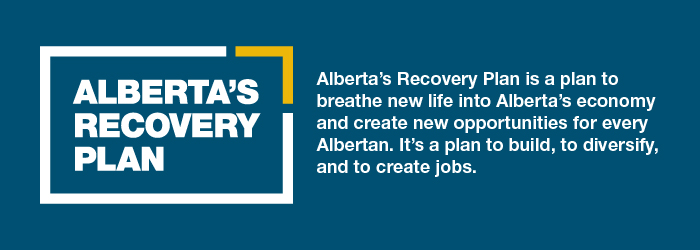The Designated Industrial Zone, or DIZ, aims to make industry operating in Alberta’s Industrial Heartland more competitive by addressing application backlogs, increasing efficiency and transparency, and supporting economic development, while achieving environmental outcomes.
Combined with other government initiatives that support the petrochemical industry, such as the Alberta Petrochemicals Incentive Program and ongoing red tape reduction efforts, the Designated Industrial Zone has the potential to help attract billions of dollars in capital investment and support thousands of direct and indirect jobs by 2030.
“Environmental outcomes will be achieved through clear expectations for operators, improved understanding of environmental conditions, and opportunities for shared infrastructure. Investing in an area with environmental infrastructure already in place, such as water intakes and distribution, robust monitoring networks for air, soil and water quality, and wetlands, provides a competitive advantage.”
“This pilot project makes good on a platform commitment and supports the Alberta government’s work to reduce red tape and improve the regulatory process. Improving the regulatory system by a matter of months would make a positive difference when comparing Alberta’s Industrial Heartland to other competitive regions.”
“The Designated Industrial Zone is another great step forward for Alberta’s standing as a leader in sustainable energy and petrochemical development, adding to the wide range of benefits our province can offer industrial investors. We are growing our manufacturing footprint with responsibly developed petrochemicals leading the way. The establishment of DIZ will streamline processes to improve Alberta’s competitiveness in this sector – attracting significant job-creating projects and building our brand as a global leader in responsible energy production.”
The Industrial Heartland Designated Industrial Zone framework is on track to be formally implemented on October 1, 2022. Following the end of the pilot phase in September 2024, the government will assess lessons learned and best practices to determine how they could be applied to other potential designated industrial zones in Alberta.
“I have been very encouraged by the efforts of government, industry, municipalities and stakeholders to ensure that the Designated Industrial Zone project reflects rigorous and proactive environmental protection and management measures. I’m hopeful the DIZ will represent a ‘leading edge’ template for how environmental needs and considerations can and should be integrated with and into industrial development planning.”
“The Designated Industrial Zone (DIZ) adds to the competitive advantages in Alberta’s Industrial Heartland (AIH). The DIZ will provide streamlined regulatory processes and reduce red tape, which will add to AIH’s strong value proposition as a global destination for world-class petrochemical investments. This regulatory approach will support responsible growth of the Industrial Heartland towards $70 billion of cumulative capital investments by 2030.”
“By designating the Heartland an industrial zone, the region emerges as a competitive force through regulatory efficiency and scaled infrastructure, unlocking Alberta’s potential to be a world leader in responsible energy. This aligns with Keyera’s plans to leverage our pipeline infrastructure and nearly 1,300 acres of undeveloped land in the region for a low carbon vision that will position us as a significant player in Alberta’s energy future. A sustainable and competitive energy future cannot be realized in isolation and today’s announcement is a significant achievement as it furthers collaboration between industry, our regulators and the Government of Alberta in finding responsibly produced clean energy solutions.”
Several important initiatives are in place or well underway in the Designated Industrial Zone, including:
- a streamlined renewal process for Environmental Protection and Enhancement Act approvals, reducing timelines from an average of 18 months to six months
- an applicant advisory service to help proponents of major new projects navigate the unique and streamlined processes that apply in Alberta’s Industrial Heartland
- identifying opportunities to improve baseline environmental knowledge and address data gaps through improved monitoring and enhanced environmental modeling
- increasing standards for air pollution abatement equipment
- a $1.5 million grant to Alberta’s Industrial Heartland Association to fund ‘regulatory ready’ designs for up to three new water intakes will provide additional assurance to investors that water will be available for industrial processes
Government has repeatedly heard from industry stakeholders that Alberta’s environmental regulatory process was outdated and complex, and that clearer expectations up front will improve application quality and their own planning.
Quick facts
- Alberta’s Natural Gas Vision and Strategy lays out a plan for Alberta to become a global supplier of clean, responsibly sourced natural gas and related products, including hydrogen, petrochemicals, and recycled plastics.
- Current investment in Alberta’s Industrial Heartland is valued at around $40 billion.
- According to Alberta’s Industrial Heartland Association, there is an opportunity to grow Alberta’s petrochemical sector by more than $30 billion in capital investment by 2030.
- Alberta’s Industrial Heartland is Canada’s largest hydrocarbon processing region. Its industrial-zoned land extends over 550 square kilometres into five different municipalities, including the City of Fort Saskatchewan, City of Edmonton and the Counties of Lamont, Strathcona and Sturgeon.
- The Northeast Capital Industrial Association is a not-for-profit cooperative representing the 23 industrial companies operating in Alberta’s Industrial Heartland.
